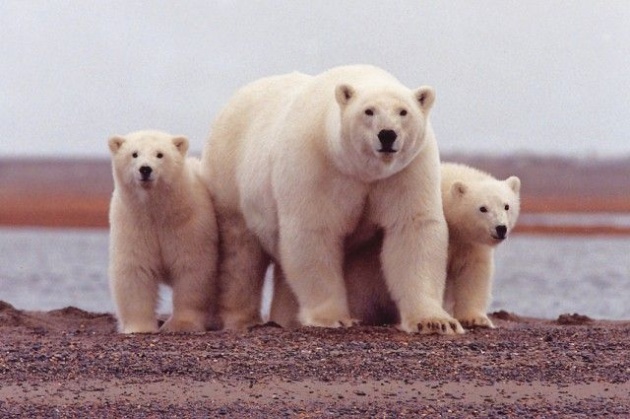The future is not looking bright for polar bears living in Canada’s Arctic islands. If the current climate trend continues to the end of the century, sea ice decline will mean that many areas are no longer able to support polar bears, a depressing new study has found. With an absence of ice for several months a year, polar bears may face losing their cubs and starvation, leaving a rather bleak outlook for this population. The work has been published in the open access journal PLOS ONE.
The world is warming up, and it’s having devastating impacts on ecosystems. Among those areas feeling the heat is the Arctic, which has lost an average of 54,000 square kilometers(20,800 square miles) of ice every year since the late 1970s. This year, the sea ice extent in this region was the sixth lowest on record.
These losses dramatically change Arctic marine ecosystems, making marine mammalsparticularly susceptible to the effects of rising temperatures. Polar bears, in particular, are very sensitive to losses in sea ice because it serves as a platform for hunting seals and mating. If they can’t get enough food in their bellies, they won’t have sufficient energy reserves to survive the lean months. Furthermore, climate change may mean that some seal habitats are no longer viable, further reducing the availability of food.
To gain a better understanding of how climate change may affect polar bear populations, researchers from the University of Alberta used a regionally focused climate model to project sea ice changes in the Canadian Arctic Archipelago. This area is home to a quarterof the world’s polar bears, despite only covering 9% of the global polar bear range. Currently, sea ice is constantly present throughout the year.
They predict that towards the end of the century, the vast majority of the archipelago could experience early ice break up, which would leave regions ice-free for two to five monthsevery year. This would force pregnant females to retreat to land early, which could interfere with births. By 2010, females may lose between 55 to 100% of their cubs.
Furthermore, because long ice-free periods mean that polar bears likely will not be able to eat sufficient amounts of food, up to 1 in 5 adult bears and even more young and old bears could starve each year.
Although it’s difficult to say whether these predictions are reliable, areas are already experiencing sharp declines in polar bear numbers. The southern Beaufort Sea, for example, experienced a 25 to 50% decline in abundance between 2001 and 2010. However, extinction is not necessarily looming as efforts to reduce greenhouse gas emissions could mean that sea ice loss could begin to slow down. 



